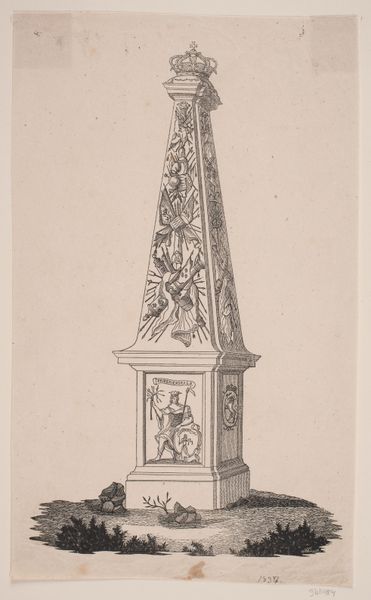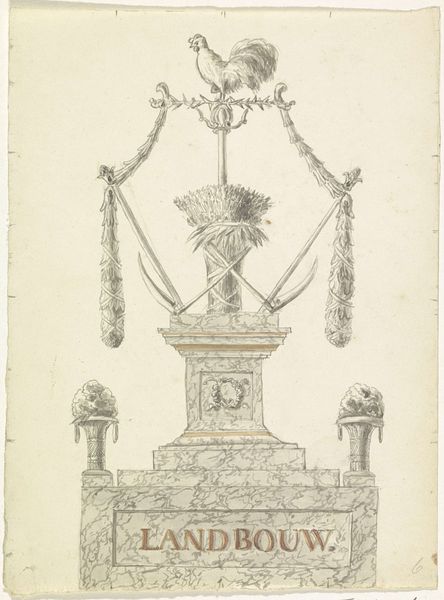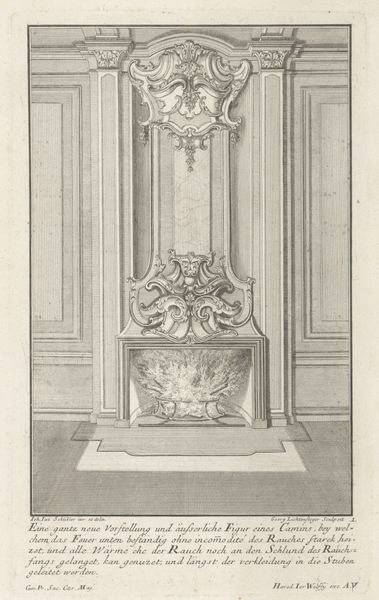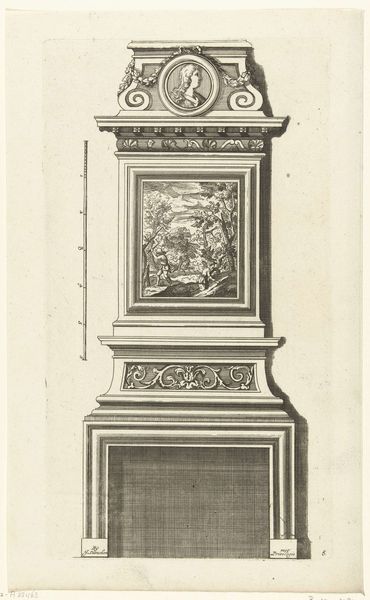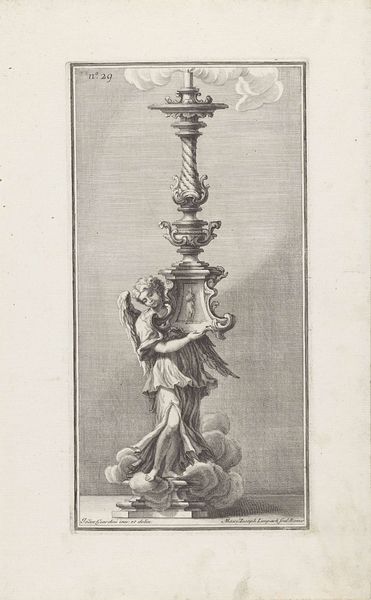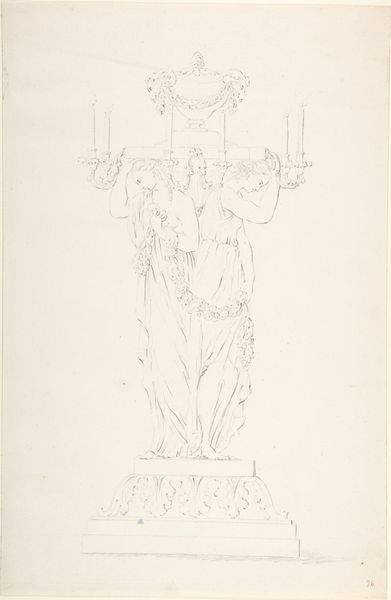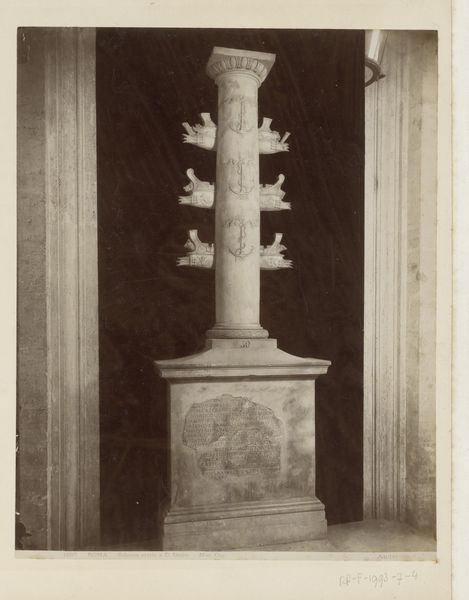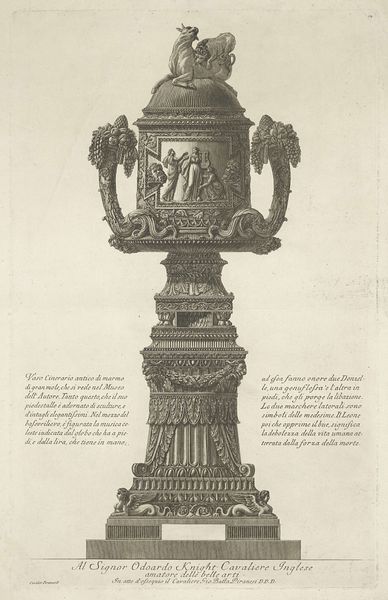
drawing, graphic-art, print, engraving, architecture
#
drawing
#
graphic-art
#
neoclassicism
# print
#
classical-realism
#
form
#
line
#
italian-renaissance
#
engraving
#
architecture
Dimensions: height 680 mm, width 434 mm
Copyright: Rijks Museum: Open Domain
This print of a candelabra was made in the 18th century by Giovanni Battista Piranesi, an artist known for his dramatic and detailed etchings of Roman architecture and design. Look closely, and you’ll see the intricate rendering of this object, Piranesi’s skill with line allowing him to convey its three-dimensional form. The design is elaborate, with ornate foliage, classical motifs, and a figure in the center. Piranesi wasn’t just an artist; he was also an antiquarian and dealer. Many of his prints, like this one, were effectively advertisements for his restoration business, marketing his ability to conserve and even fabricate ancient artifacts for wealthy collectors. The candelabra, whether real or imagined, speaks to the period’s fascination with antiquity. The printmaking process itself – the skilled labor required to create the etching plates and the subsequent printing – reflects the burgeoning market for art and design in the 1700s. The print allowed for a wide distribution of images, fueling the consumer desire for classical style. So, this image of a candelabra is not just a design, but also evidence of a sophisticated system of production, consumption and artistic ambition.
Comments
No comments
Be the first to comment and join the conversation on the ultimate creative platform.



